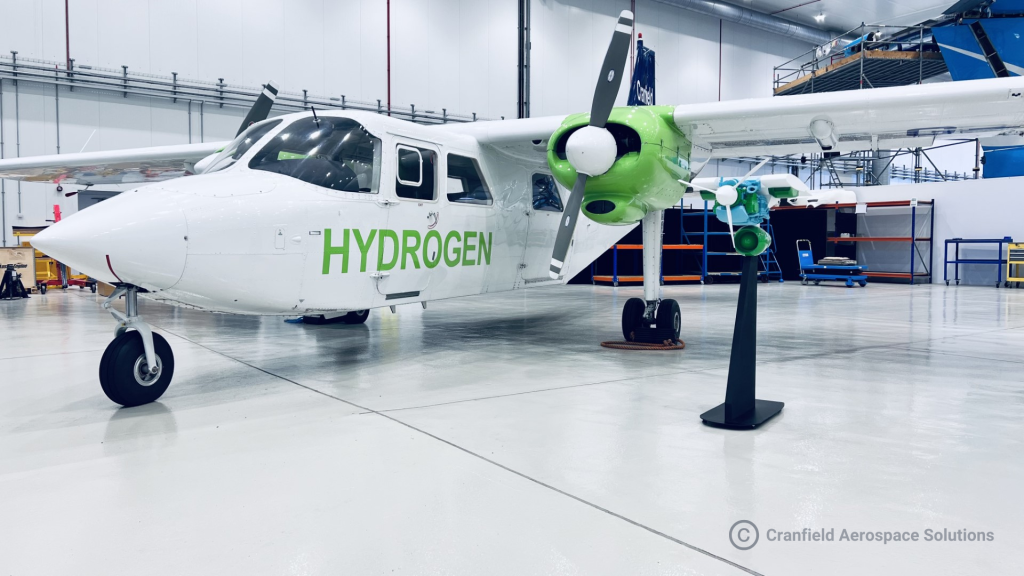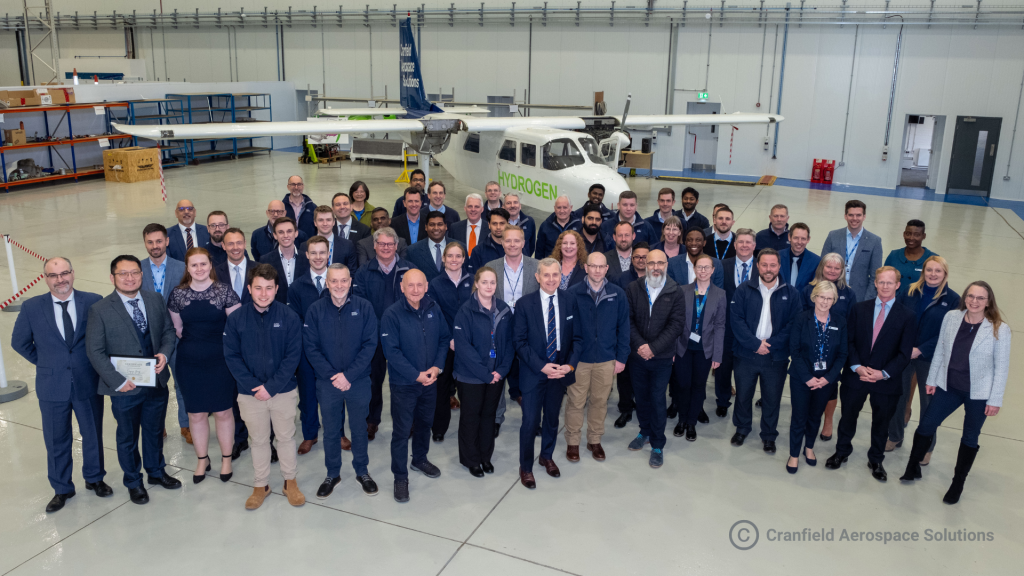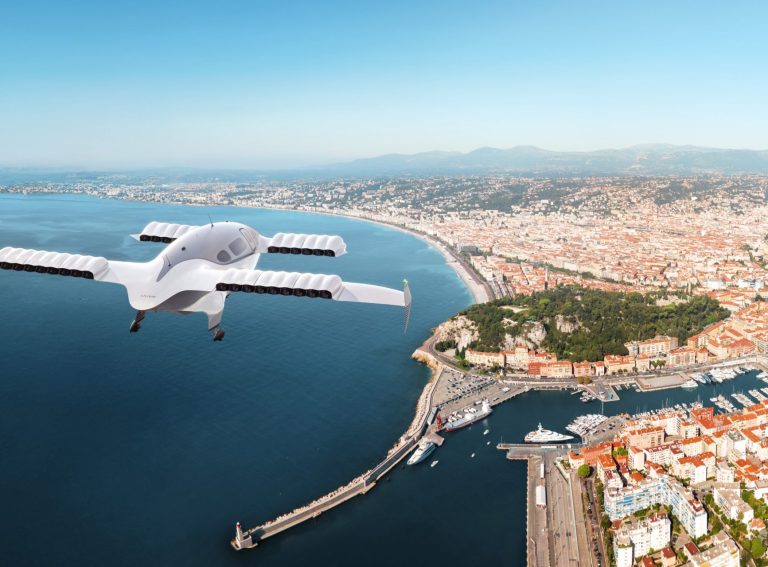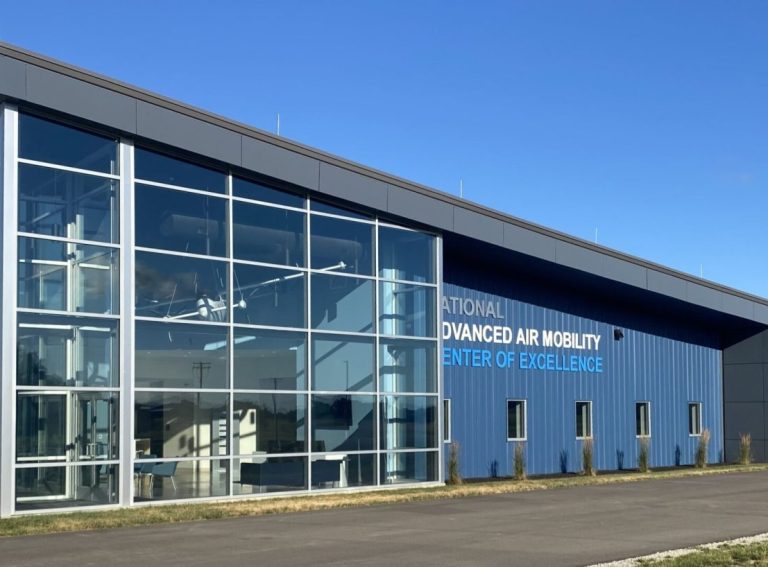Cranfield Aerospace Solutions (CAeS), an innovative spinout from Cranfield University in Bedford, England has been at the forefront of aviation technology for over 30 years. It has developed what’s been described as the world’s most power-dense hydrogen fuel cell system for aviation. With a background in tackling complex R&D challenges for major aerospace players, the company recently pivoted to focus on sustainable aviation.
Leading this transformative journey is Jenny Kavanagh, CAeS’s Chief Strategy Officer. With her ethos of adapting to changing technologies, Jenny is driving the development of the hydrogen fuel cell system in Advanced Air Mobility. Her insights blend technical depth with a clear commitment to decarbonising aviation for future generations.
Zag Air: What does Cranfield Aerospace do and how did you enter the AAM sector?
Jenny: “Cranfield Aerospace Solutions is an independent UK company spun out of Cranfield University. We have built a strong reputation for solving complex R&D challenges for major aerospace players like Airbus, Boeing and Rolls-Royce. However, relying on large OEM contracts limited our growth. Five years ago, we shifted focus to sustainability, recognising that aviation must decarbonise to ensure its future. After exploring hybrid-electric systems, we found them insufficient – they’re not zero-emission and offer only marginal efficiency gains. Hydrogen emerged as the most viable solution for true decarbonisation.”
Zag Air: We understand CAeS is designing its own aircraft, what makes this design stand out?
Jenny: “We’re developing hydrogen fuel cell propulsions systems and our first step is to retrofit an existing 9-seat aircraft with our drivetrain that is designed to be scalable and adaptable to various aviation applications, including eVTOLs. This marks a significant step in making aviation truly sustainable. We’ve designed what’s been described as the world’s most power-dense hydrogen fuel cell system for aviation. It has also been designed in a way that follows current aircraft safety assurance processes. This means it delivers more energy per kilogram than any comparable design and that it will be certifiable, which is critical in aviation, where mass and safety are paramount. This breakthrough allows us to explore how the technology can be adapted for other applications, including eVTOLs.”
Zag Air: How challenging was it to adapt your technology for the AAM sector?
Jenny: “Adaptation is relatively straightforward from an architecture point of view because our system can be scaled to suit the needs of the platform. Our core drivetrain includes a 250kW fuel cell system, electric motor and hydrogen tanks but the fuel cell system can be scaled up or down to deliver the optimum solution. The main difference is that our first application (to the 9-seat aircraft) is a hydrogen-only configuration – there’s no battery because the difference between takeoff and cruise power requirements is minimal, so the fuel cell can be sized to meet the peak power requirement without adding unnecessary weight. “For eVTOLs, the dynamics shift significantly. eVTOLs demand both high power for vertical takeoff and sufficient energy for extended range. Batteries alone struggle here—they’re 30 times less energy-dense than hydrogen and must balance high power for takeoff with energy for range, leading to inefficiencies and added weight. By combining hydrogen fuel cells for energy and smaller batteries optimised solely for power, we can reduce weight (or increase range/payload) and significantly lower operating costs on longer trips. This hydrogen-battery hybrid system unlocks much greater potential for eVTOL operations and can work with elements of the existing drivetrain if required.”

Zag Air: How does a hydrogen fuel cell system work?
Jenny: “Unlike a battery, which stores energy, a hydrogen fuel cell generates it. Hydrogen gas is fed into the fuel cell, where it’s split into positive and negative ions. The negative ions create an electrical current that powers an electric motor, driving the propeller. The positive ions then recombine with the negative ions and with oxygen from the air, producing water as the only emission. As long as hydrogen is supplied, the system can run continuously. Its efficiency and sustainability make it a game-changer for aviation, dependent only on how much hydrogen can be stored on board.”
Zag Air: How quickly do you see hydrogen being integrated into eVTOLs?
Jenny: “We predict hydrogen-powered eVTOLs could be operational by the end of the decade. While our initial focus is on retrofitting existing aircraft, development in the eVTOL space can happen in parallel. Hydrogen’s role extends beyond just making the eVTOL sector greener—it’s about advancing aviation-wide decarbonisation. Applications like eVTOLs allow companies like ours and regulators to refine the technology, setting the stage for scaling it to larger aircraft in the future. This foundational work in eVTOLs and similar platforms ensures hydrogen becomes a cornerstone of aviation’s sustainable transformation.”
Zag Air: What barriers do you see for integrating hydrogen fuel technology into AAM?
Jenny: “The main challenge is the lack of regulation. The crucial point is that while we’re developing disruptive technology, we’re not trying to disrupt safety. Aircraft safety standards, including the stringent reliability requirements (such as the 10⁻⁹ safety factor), don’t change. Our job is to ensure our technology meets these high standards, which involves dissecting the system to verify every component’s reliability and how it integrates at the aircraft level.
“We have decades of experience in this kind of safety architecture work, but the challenge lies in proving to regulators that hydrogen technology is as safe as—or safer than—conventional propulsion systems. This involves not only engineering but also bringing regulators along in the process. They need to understand how the technology functions, why certain failure modes differ, and how our designs mitigate risk to maintain safety. Even after demonstrating this, it’s a time-intensive process to formalise new regulations. It’s not just about proving the safety of the technology—it’s about ensuring the industry and regulators are aligned to move forward together.”
Zag Air: How do you ensure that the regulator keeps pace with rapidly evolving technology?
Jenny Kavanagh: “It can feel like regulation is a brick wall that technology is pushing up against. While it can be frustrating, it’s also reassuring because safety is paramount. The way we approach this challenge is by working hand-in-hand with regulators throughout the process. The UK’s Civil Aviation Authority (CAA) is leading in this collaborative approach and is doing a great job. They do face challenges with resources and funding, but their mindset and willingness to collaborate is already helping bridge the gap. More mature companies understand that while we wish progress could be faster, safety must come first. This is the safest industry in the world, and we need to keep it that way. While there’s always room for improvement, the priority should be on safety rather than speed.”
Zag Air: How do you spread awareness of hydrogen in a developing sector?
Jenny: “It’s definitely a challenge. To break into the eVTOL sector, we start by identifying which companies are most interested in hydrogen and understanding where they gather, such as industry conferences. We engage with them through various channels—attending events, reaching out on LinkedIn (which can be hit or miss), and having conversations to understand their needs and perspective. We’re not here to preach; we’re here to partner and collaborate. We aim to build relationships by attending conferences, speaking at events (such as an upcoming eVTOL conference in Germany), and getting our message out. It’s a long-term game that requires patience.
“In terms of use cases, we think the city-hopping services, such as airport-to-hotel routes, aren’t necessarily the best for hydrogen (although it could reduce the number of times you have to recharge). Hydrogen really comes into its own when you need a little more range, for example in inter-city routes (where actually you may see the first services, given the relative simplicity of the operation). There isn’t a blanket answer however – it’s about understanding each use case along with the specific platform design and working with the OEM to find the optimum solution. By building awareness and working collaboratively, we can show the real benefit that hydrogen can bring to this sector.”

Zag Air: What advice would you give to those newly entering the AAM sector?
Jenny: “The biggest shift we’re seeing now is towards credibility. The era of securing huge investments off the back of a flashy pitch and a vision is coming to an end; investors want more substance. Having a great idea isn’t enough. You need to understand the real challenges and have a solid plan for addressing them. Our journey at Cranfield Aerospace has seen some twists and turns,but our core strategic vision has stayed strong. You need to be agile and adaptable.Your plan needs to evolve with the landscape around you and as you learn new things – no matter how difficult it might be. If you don’t remain agile, you won’t survive.
“It’s also crucial to think about revenue from the start. Assume your path to market will take longer than expected—add five years to your timeline and think what would you do in that situation. The absence of revenue/investment is what sinks startups, so finding ways to generate income along the way is essential. For us, diversifying revenue streams has been key. Whether it’s from spinouts of our technology or leveraging expertise in adjacent areas, we’ve kept our cash burn down and built resilience against a tough investment environment. Startups should strive to articulate potential revenue models to investors early on. Even if it’s not the main focus, showing that you have thought through ways to monetise parts of your technology can be compelling. It’s about creating value and proving that you can stay resilient until the big payoff comes.”
Zag Air: What do you think has been the most significant milestone in integrating hydrogen into eVTOL?
Jenny: “I think the most significant milestone was when the sector was awakened to hydrogen’s potential for eVTOLs. Joby Aviation was a game changer in this regard, by showing the extent to which hydrogen could increase range. Joby made the decision a couple of years ago to acquire H2Fly, a company focused on hydrogen technology and committing the time and resources needed to develop a viable system. It was only a demonstration flight, but it sent a clear message: hydrogen is a clear contender for eVTOL applications. Joby’s move proved to the industry that this is an important path to explore, and it set a precedent for what’s possible.”
Zag Air: Is there any one individual outside your company who you’d credit for pushing this forward?
Jenny: “If we’re talking about impactful players, Joby Aviation as a company definitely stands out. They have shown what’s possible and pointed the way forward for the industry.”




